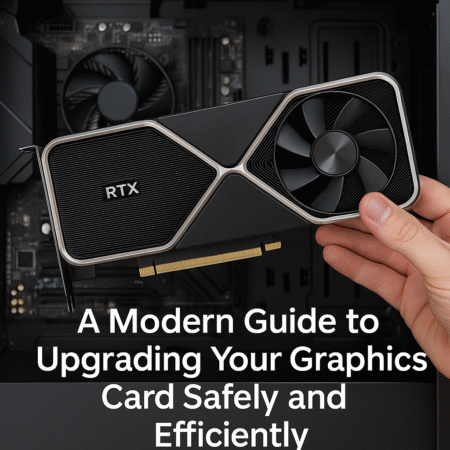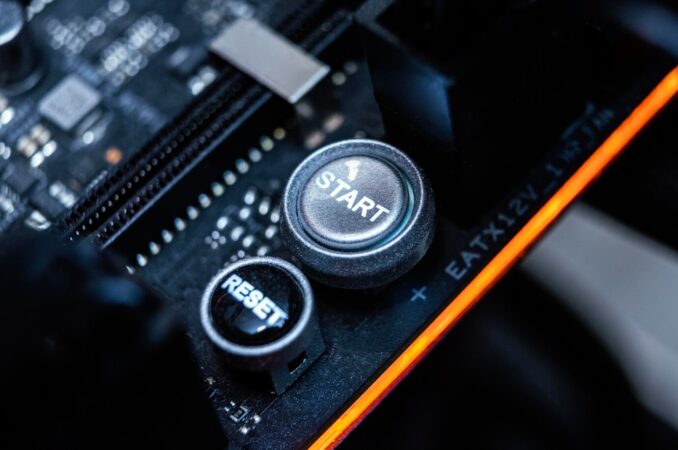
HowToForYou.com – In today’s graphics card market, saturated with bold claims and aggressive marketing, discerning the true capabilities of a GPU demands more than surface-level specs or flashy launch events. At the heart of a trustworthy review lies a rigorous and repeatable testing methodology—something often understated but absolutely vital. While many readers see final performance scores, what happens behind the scenes is a highly engineered process aimed at separating hype from hardware.
Here, we break down the strategic principles that define credible graphics card benchmarking—offering a fresh, transparent look into what makes this testing truly valuable for everyday consumers and power users alike.
Objective Metrics: Cutting Through the Noise
Effective benchmarking begins with one core principle: objectivity. Each test must yield results that are measurable, reproducible, and comparable across devices. Whether it’s raw frame rates, rendering times, or synthetic benchmark scores, every number is gathered with the intent to provide an unbiased snapshot of performance.
Instead of relying on relative or subjective rankings, expert reviewers convert scores into unified metrics—often favoring higher-is-better standards—to eliminate confusion and simplify comparisons. This approach ensures that performance can be evaluated across a diverse GPU lineup without being skewed by inconsistent reporting methods.
Reproducibility: Leveling the Playing Field
Consistency is another cornerstone. A benchmark loses its credibility if it’s not repeatable. That’s why professional reviewers rely on automated scripts and standardized testing environments to control for human error and environmental variance.
By using identical system configurations and running each test multiple times—accepting no more than a 2% variance before averaging or retesting—experts ensure that the results you see are as close to definitive as possible. This eliminates advantages a GPU might gain from a one-off fluke or a test unintentionally favoring a particular architecture.
Isolating the GPU: Eliminating Bottlenecks
Any meaningful GPU test must isolate the graphics card from other system variables. That means deploying top-tier components—high-end CPUs, RAM, SSDs, and cooling systems—to eliminate bottlenecks and ensure the GPU is the only performance-limiting factor.
This isn’t about showcasing a perfect PC build—it’s about ensuring that any performance gains or losses are genuinely due to the graphics card itself, not background variables like thermal throttling or memory bandwidth.
Synthetic Benchmarks: Theoretical Strength, Real Implications
Synthetic tests like 3DMark or SPECviewperf serve as controlled stress tests, simulating gaming or computational workloads using repeatable sequences. These benchmarks give a high-level look at a GPU’s theoretical performance in specific domains—rasterization, ray tracing, compute tasks—but they are only part of the picture.
Used wisely, synthetic benchmarks offer a consistent performance baseline, helping reviewers detect architectural advantages or emerging trends between hardware generations. However, these scores are best understood as indicators, not final verdicts.
Creative Workloads: Real-World Applications for Professionals
For content creators, creative performance is as critical as gaming capability. Tasks like video rendering, 3D modeling, and image manipulation can vary dramatically depending on GPU architecture and driver support.
Benchmarking tools like Blender Benchmark, HandBrake, and PugetBench simulate these workflows to assess how well a GPU performs in professional environments. These aren’t just arbitrary tests—they reflect real bottlenecks and time-saving opportunities for professionals working under deadline pressure.
Gaming Benchmarks: Beyond Maximum Settings
Gaming is the most common use case for discrete GPUs, but testing it well requires more than just cranking up the visuals. Modern reviews examine performance across multiple settings and resolutions—from 1080p to 4K—and include both average and 1% low frame rates.
The latter metric, often overlooked, is particularly valuable—it represents the worst-case experience during gameplay. A GPU that posts high average FPS but dips sharply during intense scenes might still deliver a jarring gaming experience. That’s why comprehensive reviews factor in both peaks and valleys.
Moreover, scenarios with and without ray tracing and upscaling are tested to mimic the range of settings a user might employ, giving a broader view of the GPU’s adaptability.
Performance Scoring: The Geometric Mean Advantage
Scoring isn’t just about adding numbers. The most robust reviews use the geometric mean to reduce the impact of outlier data, ensuring that one unusually high (or low) score doesn’t skew the overall result.
Each category—synthetic, creative, and gaming—is first averaged independently. Then, a combined performance score is derived, reflecting a GPU’s balanced capabilities. A final “value score” emerges by dividing this performance index by the GPU’s MSRP, offering a real-world perspective on price-to-performance.
Why This Matters
Graphics cards are one of the most expensive components in a PC build. Making the right choice can mean years of smooth gaming or creative work—or constant frustration. Transparent, methodical, and repeatable testing gives consumers confidence in their purchase decisions, beyond marketing promises or cherry-picked results.
While individual experiences may vary depending on your specific setup, high-quality benchmarking provides a reliable guidepost. It’s less about finding the “perfect” card and more about identifying the one that best fits your needs, budget, and expectations.
Final Thoughts
In an era where GPU prices fluctuate wildly and specs can be misleading, there’s immense value in third-party reviews rooted in empirical testing. The methodologies behind the scenes may be complex, but the goal is simple: empower readers to make informed, confident decisions.
The next time you glance at a benchmark score, know that it likely represents hours of precise configuration, detailed observation, and technical diligence. And that, more than any marketing slogan, is what makes it worth trusting.






